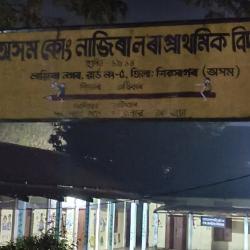Indian film-star Shahrukh Khan's explanation of his right to 'creative liberties' to justify portrayal of tobacco use in Indian cinema has sparked a huge row with India's health minister Dr Anbumani Ramadoss' appeal to film-stars to refrain from using tobacco on-screen and also in public places.
Tobacco is reported to kill more than a million people in India alone every year. It is a well-known cause of life-threatening ailments. It has also been proven in many studies that most of the tobacco use begins before the age of 18.
It is indeed a moral imperative on the Government of India to protect the right to life and good health of its young citizens, especially from public health and social justice point-of-view.
"One of the easiest ways to significantly bring down number of children and youth who get initiated to tobacco use in India, without any budgetary allocation for this public health exercise, is to remove depiction of tobacco use in films and TV", had rightly said Dr Ramadoss at the last World Conference on Tobacco or Health in USA.
One of the major influences on the uptake of teen tobacco use is the glamourisation of tobacco use in movies and on television. This has been well documented by comprehensive research studies in India and US.
In an earlier study done by World Health Organization and Indian Ministry of Health and Family Welfare in 2003 it was revealed that 76% of Indian movies had tobacco use shown in them. In 1991, where 22% of top box office movie hits had lead characters using tobacco on-screen, in 2002, this escalated to 53% tobacco use depiction by lead characters in Indian movies. This study also demonstrated that 52.2% of children in India who had their first smoke were influenced by tobacco use depicted in movies.
A repeat follow-up study conducted by WHO and Ministry of Health and Family Welfare in India on top box office movie hits during 2004-2005 demonstrated that tobacco use depiction in movies has become more aggressive as compared to previous years. During 2004-2005, 89% of all movies analyzed contained tobacco use on screen and 75.5% movies depicted leading stars using tobacco on screen. Moreover 41% of movies screened had clear and distinct tobacco brand placement.
Dr Ramadoss says categorically that stopping depiction of tobacco use in films is an evidence based public health measure, and that is what he has been strongly advocating since May 31, 2005.
India, says Dr Ramadoss, has the world's largest film industry rolling out over 900 films per year. Through cinema theatres, these movies reach 60 million people and through cable television network, they further reach another 70 million people in India. "Influence of cinema is paramount in India" says Dr Ramadoss.
Dr Ramadoss had also said "film and tobacco industry are hands-in-glove involved" and suggested big pay-offs too.
The Cigarette and Other Tobacco Products Act 2003 came into effect since May 31, 2003. Explaining the amendments notified on May 31, 2005, Dr Ramadoss had said that movies showing tobacco use will be given 'A' certificate on the condition that the characters using tobacco on screen agree to do a disclosure stating tobacco hazards clearly either before, middle or before the end of that movie.
Health warnings in the same language as that of the movie would start scrolling up 1 minute before the use of tobacco is depicted in movies and will end not before another minute after the depiction of tobacco use stops in that movie.
Exposure to tobacco use in movies is clearly linked to youth tobacco use. Simply put, more must be done to ensure that tobacco use in movies is removed from films seen by our nation's youth. We have within our power one simple and effective way to jump start the decline in youth tobacco use - delete tobacco use in films from the list of influences that rob our youth of longer and healthier lives by removing tobacco use from movies, unless they clearly depict the negative health effects. Together we can ensure that movies continue to entertain and inspire our children and youth, and at the same time, save countless lives from tobacco addiction and premature death. The right to life must overrule the right to 'creative liberty' of film-stars.
- 18748 reads










Add new comment